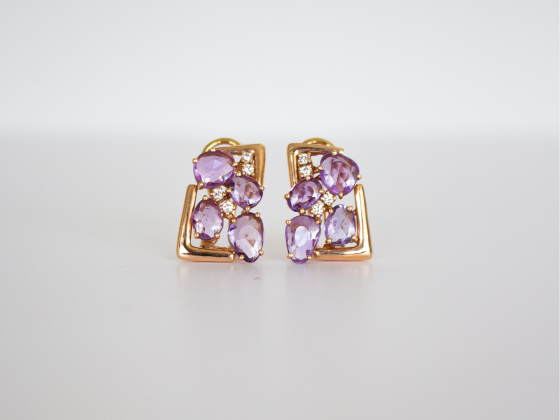By Aisha Hassan on April 22nd, 2021
Paradise lost
When the Khmer Rouge regime ravaged Cambodia in 1975, the brutal regime destroyed countless families, including Ly Pisith’s. “I have lost a great part of me with the war which took away the lives of more than two million people and my loved ones,” he says.
Pisith was only eight years old when the Khmer Rouge came to power and he lost his family. He spent the next two years in a refugee camp in Thailand before moving to France. After studying in Bordeaux and working as a product designer in Paris, Pisith’s career eventually took him to Singapore, which is where he met art curator Agnes Lim. The two friends began discussing a jewelry concept store while thoughts of Cambodia also bloomed in Pisith’s mind. Both ideas came to fruition: In 2007, Pisith finally returned to his first home, and in 2008, Garden of Desire was born.
“Garden of Desire is about recreating a thing of beauty in a country which brought only sadness to me,” Pisith says. “It is the garden I wish I had known that I now wish to grow...I can’t erase the past but I can move on.”
Silver linings
Each one of Pisith’s designs is indeed a “thing of beauty” that contains within it his own perspective. “When I create my pieces, I have a story, my story, to share a point of view,” he says.
For instance, the Nature collection makes use of the most intricate details Pisith observes on long walks in Cambodia. “I will often chance upon interesting forms and my imagination takes over. It is usually the smallest part or simply a curve that I reference,” he says. The Pod Earrings, for instance, present the cross-section of a lotus pod in delicately curled silver, while minute textural etchings grace the Shrooms Earrings, and the slope of the Foliage Earrings tribute nature’s mastery in shaping a leaf.
Even Garden of Desire’s material of choice, 925 Sterling Silver or 955 Fine Silver, is deeply tied to both Cambodia’s national, and Pisith’s personal, history. “In Cambodia — where silver has long been the country’s most precious metal — the art of silversmithing is more than 1,000 years old,” Pisith explains. “It peaked in the 11th century during the Angkor empire and, eight centuries later, plunged into decline during the brutal Pol Pot regime in the 1970s and the economic crisis that followed.”
With such a rich homage to culture and craft in the very making of its pieces, it’s no wonder Garden of Desire’s wearable art is sold at institutions like the Asian Art Museum in San Francisco and the Asian Civilisations Museum in Singapore. Agnes, who focuses on the operations and marketing side of the business, draws on her experience as an art curator (largely championing Southeast Asian artists) to carefully select what pieces are shown to stockists. “Trying to tell our story in a sincere way is something I make sure to do,” she says.
Finding a way home
A core tenet of Garden of Desire’s mission is to champion artisanship. “In this day and age, everything is so fast forward...I embraced the entire handmade process of time and human touch,” Pisith says. Beyond relying on his own skills, Pisith also has a master artisan whom he first encountered in the old market in Siem Reap, and who eventually onboarded a team of younger artisans too. “It has always been vital for me to provide enduring employment with fair work practices and enhancing the trade,” Pisith says. “Knowing my artisans have reached a certain level of their craft delights me greatly.”
Agnes and Pisith both agree that conveying the precious nature of handmade jewelry is challenging. Agnes notes, for instance, that people don’t often know the price of silver, and Pisith points out that arduous production processes are sometimes overlooked. “I wish people could appreciate the fine art of making, giving it more value and understanding artisans and their craft,” Pisith says.
Ultimately, nurturing artisans in Cambodia and sharing his deeply personal designs — such as the Nest Bracelet, which expresses a longing for home — is how Pisith uses Garden of Desire to make a difference, to both fellow Cambodians and himself. “I have never forgotten where I came from and I want to give back and help in my own way,” Pisith says. “[Garden of Desire] represents my struggle to love my country again.”
ABOUT THE AUTHOR
Aisha Hassan is a writer, journalist, and co-founder of Dia. Previously, Aisha worked for Quartz in New York and Harper’s Bazaar in Malaysia. Her fiction has been published in international literary magazines. She has a bachelor’s degree in English Language & Literature from the University of Oxford, and a master’s degree from Columbia’s Graduate School of Journalism.











